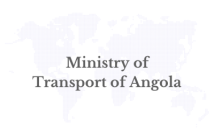- Chemical pollution of the ocean is a profound and growing global problem that requires urgent and coordinated action
- Marine chemical pollution is predominantly due to human actions. As we are producing far more chemicals in ever-greater volumes, so the impact on the marine environment will get more severe
- Climate change and marine chemical pollution are deeply connected; tackling each with this in mind will help reduce the impact each has on marine life
- There are tens of thousands of synthetic chemicals, with thousands being added each year, yet in most cases we know almost nothing about their impact on the ocean or on human health
- Trillions of dollars in ocean services are at risk, though the true impact of marine chemical pollution is as yet unquantified
- The cost of inaction is steep—in the Gulf of Mexico alone, we estimate the worsening of ‘dead zones’ from nutrient pollution would cost the US about US$838m a year in fisheries revenues
- The chemicals industry can have a massive impact on resolving marine chemical pollution, with green chemistry innovation potentially holding the key to sustainable change
- Investors play an important role in paving the way to zero marine pollution —eliminating marine chemical pollution needs to be an investable proposition.
TOKYO, JAPAN – Media OutReach – 3 March 2022 – Back to Blue, an initiative of Economist Impact and The Nippon Foundation, is releasing a new report, The Invisible Wave: Getting to zero chemical pollution in the ocean . The main purpose of the report is to raise awareness of marine chemical pollution, the scale and potential impact of which are not widely appreciated, and to focus minds on delivering solutions to achieve a zero-pollution ocean.
Marine pollution has deservedly gained greater attention in recent years, most notably through the vexing—and highly visible—issue of plastics. Chemical pollution, by contrast, is often unseen—though it is no less important or urgent. Synthetic chemicals in the form of nutrients, heavy metals, persistent organic pollutants, pesticides, sewage, plastics and microplastics, and those used in the vast majority of household and consumer products flush into the ocean through freshwater systems and runoff, through atmospheric deposition, as well as from ships and extractive industries at sea.
Chemicals are present in the deepest parts of the ocean and in all manner of marine biota, and concentrations of many of the most dangerous chemicals in the marine environment continue to rise. Worryingly, a 2022 study concluded that the world has already crossed the planetary boundary where chemicals threaten the very ecosystems—including the marine environment—upon which humans and most other species depend. Since humans are producing far more chemicals in ever-greater volumes, the impact on the marine environment will only become more severe.
Given the fundamental importance of the ocean to all life on Earth, it is striking that there has not yet been a serious scientific assessment at scale of marine chemical pollution and its impact on biodiversity and marine ecosystems, and the overall health of the ocean. Much more research is needed to determine the damage that many chemicals inflict on the marine environment.
The urgent need for more research is underscored by a further point that this report seeks to demonstrate: that despite lacking a complete picture of the dangers posed by marine chemical pollution, failing to act now is a risk too far. Tackling the problem requires the coordinated action of everyone in the chemicals value chain—from the chemicals industry itself to governments, regulators, investors and financiers, as well as civil society and consumers. Failure to address marine chemical pollution in a systematic manner risks inflicting irreparable harm on the ocean.
Among our other key findings and recommendations are:
- Regulators need to enact and enforce stricter rules on pollution, particularly in Asia-Pacific, the Middle East and Africa where much of the future growth in chemicals production will come, and where often there is limited oversight and capacity to deal with chemical pollution. Central to marine chemical pollution is that industry for decades has been able to externalize its costs—passing these on to society, often to the poorest and most vulnerable;
- Actions by the chemicals sector—encompassing fossil fuel-based chemicals, specialty chemicals, pharmaceuticals and agricultural chemicals—present perhaps the most compelling opportunity to address marine chemical pollution. Yet for an industry that is sprawling, capital-intensive and low-margin, change will be a complex, expensive and fraught process;
- Momentum is growing for a circular economy, and a recognition that green chemistry–which offers an opportunity to design high-performance products that are less toxic and less polluting—may be a route to reducing pollution;
- The finance and investment communities remain largely unaware of marine chemical pollution and its associated risks. This is a barrier to change, but also an opportunity. Better information about the material risks the chemical sector will face from a transition to a zero-pollution ocean will be an important first step to any finance sector-led solutions—in tandem with an appreciation of the early rewards for first movers;
- Popular awareness of the danger of marine chemical pollution is low relative to similar issues such as plastic pollution or climate change. Building greater awareness is essential. Consumers, notably, could influence marine chemical pollution through purchasing decisions. Establishing a consumers’ right-to-know about hazardous chemicals in the products they buy is a first step.
Charles Goddard, editorial director at Economist Impact, says:
The warning signs have been present for a while, but this report from the Back to Blue initiative will, I hope, set off the alarm bells on chemical pollution in the ocean. Synthetic chemicals, many hazardous and harmful, are now ubiquitous across the seas—much like plastics—and left untackled, this assault will only get worse. There is much more we need to know and understand, but we must not let that delay action but rather work with urgency with industry, regulators and consumers towards a zero-pollution ocean, and prevent and reverse this unseen poisoning of an ecosystem on which all of life depends.
Yohei Sasakawa, chairman at The Nippon Foundation, says:
Notes to editors – about The invisible wave
Launched at the 9th annual  World Ocean Summit, The invisible wave provides a diagnostic of the scale of the ocean pollution challenge and marks the beginning of a solution-oriented agenda through an in-depth white paper, infographic series and digital data story. It lays out the priorities for scientific research, regulation, industry and transformation within the chemicals sector as well as all those which rely on its output. This problem is beyond any one actor, and solutions need to cross sectoral boundaries and geographical borders. With innovation, investment and reforms, the chemicals industry – that has brought so much to human welfare and comfort – can be part of the transition to a 21st century net zero world.
World Ocean Summit, The invisible wave provides a diagnostic of the scale of the ocean pollution challenge and marks the beginning of a solution-oriented agenda through an in-depth white paper, infographic series and digital data story. It lays out the priorities for scientific research, regulation, industry and transformation within the chemicals sector as well as all those which rely on its output. This problem is beyond any one actor, and solutions need to cross sectoral boundaries and geographical borders. With innovation, investment and reforms, the chemicals industry – that has brought so much to human welfare and comfort – can be part of the transition to a 21st century net zero world.
 Visit backtoblueinitiative.com for the full report, video and data story.
Visit backtoblueinitiative.com for the full report, video and data story.
About Back to Blue
“ Back to Blue” is an initiative launched by Economist Impact and The Nippon Foundation in 2021 to focus efforts on evidence-based approaches and solutions that tackle escalating ocean challenges, such as those posed by major threats such as climate change, pollution and habitat destruction.
Back to Blue” is an initiative launched by Economist Impact and The Nippon Foundation in 2021 to focus efforts on evidence-based approaches and solutions that tackle escalating ocean challenges, such as those posed by major threats such as climate change, pollution and habitat destruction.
While governments and policymakers have begun efforts towards restoring biodiversity and regenerating ocean health, there remains an ostensible knowledge gap on plastic and chemical pollution.
Recognising the need to stimulate fresh dialogue and solutions to pressing ocean issues, this multi-year initiative brings together both organisations’ unique capabilities in ocean research and programme-building to build a powerful platform which will accelerate momentum in improving ocean health. In 2021, the Plastic Management Index published under Back to Blue addressed the issue of marine plastic pollution. In 2022 the focus is on the less visible pollution from chemical contaminants that are damaging ocean life and ecosystems and in the long term, human health.”
About Economist Impact
Economist Impact combines the rigour of a think-tank with the creativity of a media brand to engage a globally influential audience. We believe that evidence-based insights can open debate, broaden perspectives and catalyse progress. The services offered by Economist Impact previously existed within The Economist Group as separate entities, including EIU Thought Leadership, EIU Public Policy, EIU Health Policy, Economist Events, EBrandConnect and SignalNoise.
We are building on a 75-year track record of analysis across 205 countries. Along with framework design, benchmarking, economic and social impact analysis, forecasting and scenario modelling, we provide creative storytelling, events expertise, design-thinking solutions and market-leading media products, making Economist Impact uniquely positioned to deliver measurable outcomes to our clients.
About The Nippon Foundation
Established in 1962, The Nippon Foundation is Japan’s largest philanthropic foundation, providing support to public-service activities in a variety of fields across national borders. In ocean affairs, the Foundation aims to cultivate human resources who will chart a course for the ocean’s future and to pass on the ocean’s riches to future generations. Other primary areas of activity include support for children, persons with disabilities, disaster relief, and international cooperation, with the ultimate goal of achieving a society where all people support one another.
The issuer is solely responsible for the content of this announcement.





